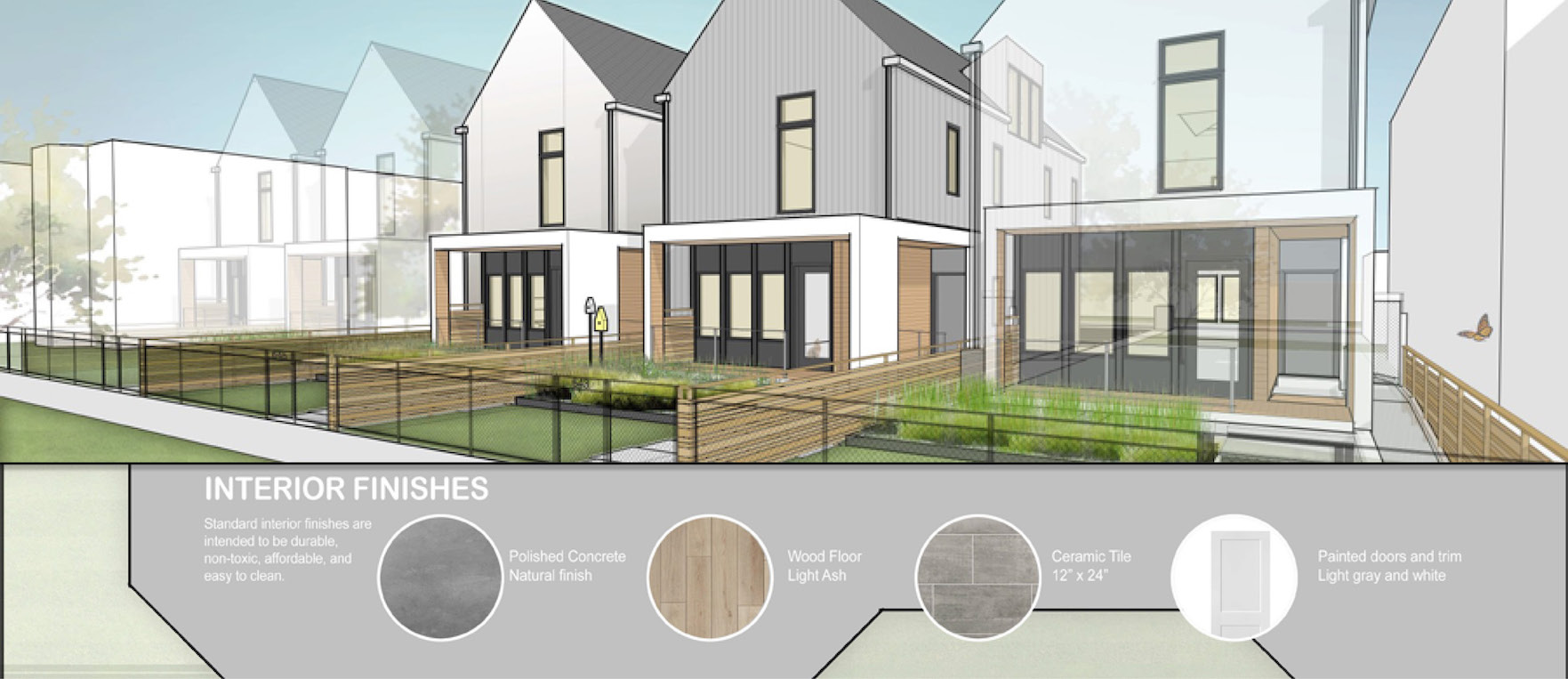As housing in Chicagoland becomes less affordable and increasingly scarce, industry experts are searching for ways to meet the needs of those living on a moderate income. Those efforts have manifested in a number of ways, including design contests that aim to provide less expensive alternatives to the bungalows and 2- to 4-flat housing stock in the Chicago area.
The Chicago Housing Policy Task Force — a coalition of organizations including Neighborhood Housing Services of Chicago and the Chicago chapter of the American Institute of Architects — announced the winner of their Disruptive Design contest this week. The competition sought to “address the challenges associated with designing and building affordable, owner-occupied housing,” according to the contest’s website. And the winner appears to have done just that and will subsequently see their design come to life in both the Bronzeville and West Humboldt Park neighborhoods thanks to developer Related Midwest.
Greg Tamborino’s “Adaptable House” design was described by AIA as a new take on the Chicago worker’s cottage that “creates a flexible two-flat with an accessible first-floor that could be an apartment or live-work space that could be easily reconfigured to adapt to the homeowner at any stage in their life.” In addition to seeing his creation come to fruition, Tamborino will receive $20,000 in prize money.
Contest juror Amy Mayer, vice president of construction at Related Midwest, said the design reimagines the starter-home model. “When you’re young you can own the one-bedroom on the first floor, renting out the second unit. As you get older and have kids, you can move upstairs to the two-bedroom; and, as you age, you can live on the accessible first-floor again.” The contest received 133 entries; runners up were GreenFlex 600 by Joel Huffman and Urban Cabin by Georgi Todorov and Petya Petrova.
But this design contest is one of many seeking to tackle the complex issues facing urban living. In March, the Congress for New Urbanism Illinois announced the winners of their “2019 Fill the (Housing) Gap: A Missing Middle Design Competition.”
The idea behind the missing middle is that there isn’t enough small-scale multifamily housing that fits into single-family neighborhoods. If more could be developed, new urbanists say this would both take advantage of infill opportunities while also providing greater density and affordability near local amenities and transit options.
Some companies aren’t waiting around for a contest but are taking initiative on their own to develop innovative housing designs. In May, design and construction company Skender opened a new prefab housing manufacturing facility on Chicago’s Southwest Side. Chicago Mayor Lori Lightfoot, who attended the opening, called the facility “a win-win for Chicago: generating job growth on the Southwest side while advancing a creative solution to address the affordable housing shortage.”
Lightfoot also indicated her willingness to collaborate with other entities on similar projects in a press release related to the opening. “We will work with residents, community leaders and developers across the city to ensure every Chicagoan has a safe and affordable place to live,” Lightfoot said. “The addition of new modular units will improve access to sustainable housing, prevent homelessness and ensure that as Chicago grows all of our neighbors can afford to grow too.”
But some worry innovative design isn’t enough to combat other entrenched impediments to affordable housing solutions. A July 8 report penned by Michael Stegman, senior housing policy fellow at the Milken Institute Center for Financial Markets, noted that the federal government must address the challenges faced by government-sponsored enterprises Fannie Mae and Freddie Mac as well as “the effects of land use and related regulations that create barriers to housing development, especially starter homes and non-luxury rental properties.”
“Supply constraints such as exclusionary zoning and lengthy development approval processes raise development costs and lead to higher rent burdens for working families,” Stegman wrote in the essay for the Joint Center for Housing Studies of Harvard University.
